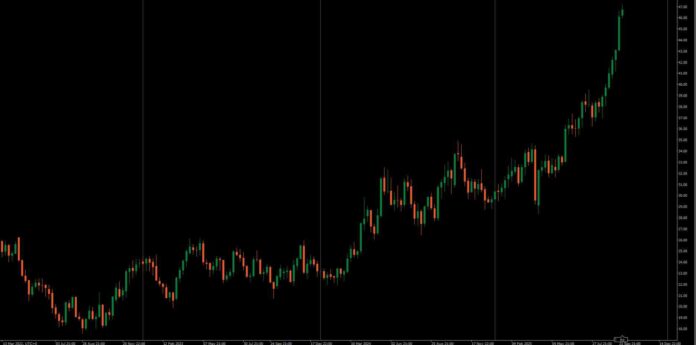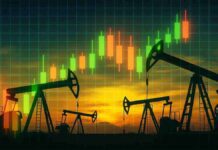In the turbulent financial landscape of 2025, silver is emerging as a beacon for investors seeking refuge from geopolitical uncertainties and eroding faith in fiat currencies. As of September 29, 2025, the spot price of silver hovers around $46.05 per ounce, marking a staggering 50% year-to-date gain and flirting with levels not seen since the infamous Hunt Brothers’ squeeze of 1980. This resurgence echoes the metal’s dual role as an industrial powerhouse and a safe-haven asset, driven by escalating global tensions—from ongoing conflicts in Ukraine and the Middle East to U.S.-China trade frictions—and a broader distrust in paper money amid persistent inflation and central bank policies. But is silver poised to shatter its all-time high? This article delves into silver’s performance over the past decade, revisits the Hunt Brothers’ legendary market cornering, provides a recent analysis of market dynamics, and gathers analyst target prices, highlighting why the “poor man’s gold” is captivating investors anew.
Silver’s allure in times of crisis isn’t new, but 2025’s confluence of factors—supply deficits, surging industrial demand for green tech, and fiat skepticism—has ignited a rally that could redefine its trajectory. As central banks hoard gold and retail investors flock to precious metals ETFs, silver’s affordability (trading at a gold-to-silver ratio of around 75:1) positions it as an accessible hedge. Yet, with volatility inherent, understanding its history and drivers is crucial for navigating this potential boom.
The Hunt Brothers’ Legacy: The 1980 Squeeze That Shook Markets
To appreciate silver’s current hunt for highs, we must revisit the Hunt Brothers’ audacious attempt to corner the market in 1980—a saga of ambition, speculation, and regulatory reckoning. Nelson Bunker Hunt and William Herbert Hunt, Texas oil billionaires, began accumulating silver in the 1970s amid fears of inflation and dollar devaluation. By 1979, they controlled an estimated one-third of the world’s deliverable silver supply, driving prices from $6 per ounce in early 1979 to a record $49.45 on January 18, 1980—a 700% surge.
The brothers’ strategy involved leveraging futures contracts and physical hoarding, betting on silver’s scarcity as industrial demand grew. At its peak, their holdings were valued at over $4 billion, but the bubble burst on “Silver Thursday,” March 27, 1980, when margin calls and exchange rule changes forced massive sell-offs, crashing prices by 50% in a day. The Hunts faced bankruptcy, lawsuits, and CFTC fines, but their episode set the nominal high of $49.45—equivalent to about $180 in today’s dollars when adjusted for inflation.
This historical benchmark looms large in 2025, as silver approaches unadjusted records. Unlike the Hunts’ manipulation-driven spike, today’s rally stems from genuine supply-demand imbalances and macroeconomic fears, but echoes of speculative fervor persist in retail-driven squeezes on platforms like Reddit.
Silver’s Rollercoaster: Performance Over the Last Decade (2015-2025)
The past decade has been a wild ride for silver, transitioning from post-financial crisis doldrums to a 2025 bull run fueled by pandemic recovery and geopolitical strife. In 2015, silver averaged around $15.68 per ounce, weighed down by a strong dollar and sluggish industrial demand amid China’s slowdown. Prices dipped further to $13.97 in 2016 before a gradual climb, hitting $18.29 in 2019 as trade wars sparked safe-haven buying.
The 2020 COVID-19 pandemic ignited a surge: Silver rocketed to $28.89 by year’s end, driven by stimulus-fueled inflation fears and supply chain disruptions. A brief 2021 Reddit-fueled squeeze pushed it above $30, but it settled at $23.30 amid Fed tightening. Volatility persisted: 2022’s Ukraine invasion and energy crisis lifted it to $21.73 average, while 2023-2024 saw gains to $23.38 and $25.77, respectively, as green energy demand (solar panels, EVs) accelerated.
By mid-2025, silver has exploded, averaging over $35 year-to-date and peaking near $49 in late September, propelled by industrial shortages and investor flight to tangibles. Total returns over the decade exceed 200%, outpacing many equities, but with sharp drawdowns—like 30% drops in 2016 and 2022—highlighting its volatility.
Recent Analysis: Geopolitical Risks and Fiat Distrust Fuel the Fire
As of September 29, 2025, silver trades at $46.05, up 1.86% daily and 15.21% monthly, amid a weakening dollar and Fed rate cuts. Geopolitical risks—escalating Middle East tensions, U.S. election uncertainties, and Russia-China alliances—have amplified demand, with silver acting as a hedge against supply disruptions in mining hubs like Peru and Mexico. Low confidence in fiat money, stoked by persistent inflation (above 2% targets) and central bank balance sheet expansions, has driven retail and institutional flows into precious metals. Silver ETFs like iShares Silver Trust (SLV) have seen $6.17 billion in inflows this year, reflecting its role in risk mitigation.
Industrial demand surges: Silver’s use in solar panels (up 20% YoY) and EVs could push total demand to 1.2 billion ounces in 2025, per the Silver Institute, amid a 10% supply deficit. Geopolitical premiums add fuel: Conflicts disrupt supply chains, while fiat skepticism—evident in Bitcoin’s rise—bolsters silver’s “sound money” appeal. Technicals support: Breaking $41 resistance signals further upside, with RSI above 70 indicating overbought but bullish momentum.
Yet, risks loom: A stronger dollar from U.S. growth or mining strikes could cap gains. Overall, the setup favors bulls, with silver potentially eclipsing its nominal high if tensions escalate.
Target Prices: Analyst Projections for Silver’s Next Move
Analysts are optimistic, with targets reflecting structural demand and macro tailwinds. Key forecasts for end-2025:
- InvestingHaven: $50+, testing all-time highs amid supply crunch.
- HSBC: $35.14, cautious on industrial slowdowns.
- Citigroup: $40, driven by green transition.
- LBMA: Average $32.86, balanced view.
- World Bank: $31-33, emphasizing economic headwinds.
- WisdomTree: $40 by Q3, with 2026 highs.
Consensus leans toward $35-45 by year-end, with upside to $50+ if geopolitical risks intensify. For 2026, some see $52.50+ all-time highs.
Disclaimer
The content on MarketsFN.com is provided for educational and informational purposes only. It does not constitute financial advice, investment recommendations, or trading guidance. All investments involve risks, and past performance does not guarantee future results. You are solely responsible for your investment decisions and should conduct independent research and consult a qualified financial advisor before acting. MarketsFN.com and its authors are not liable for any losses or damages arising from your use of this information.





